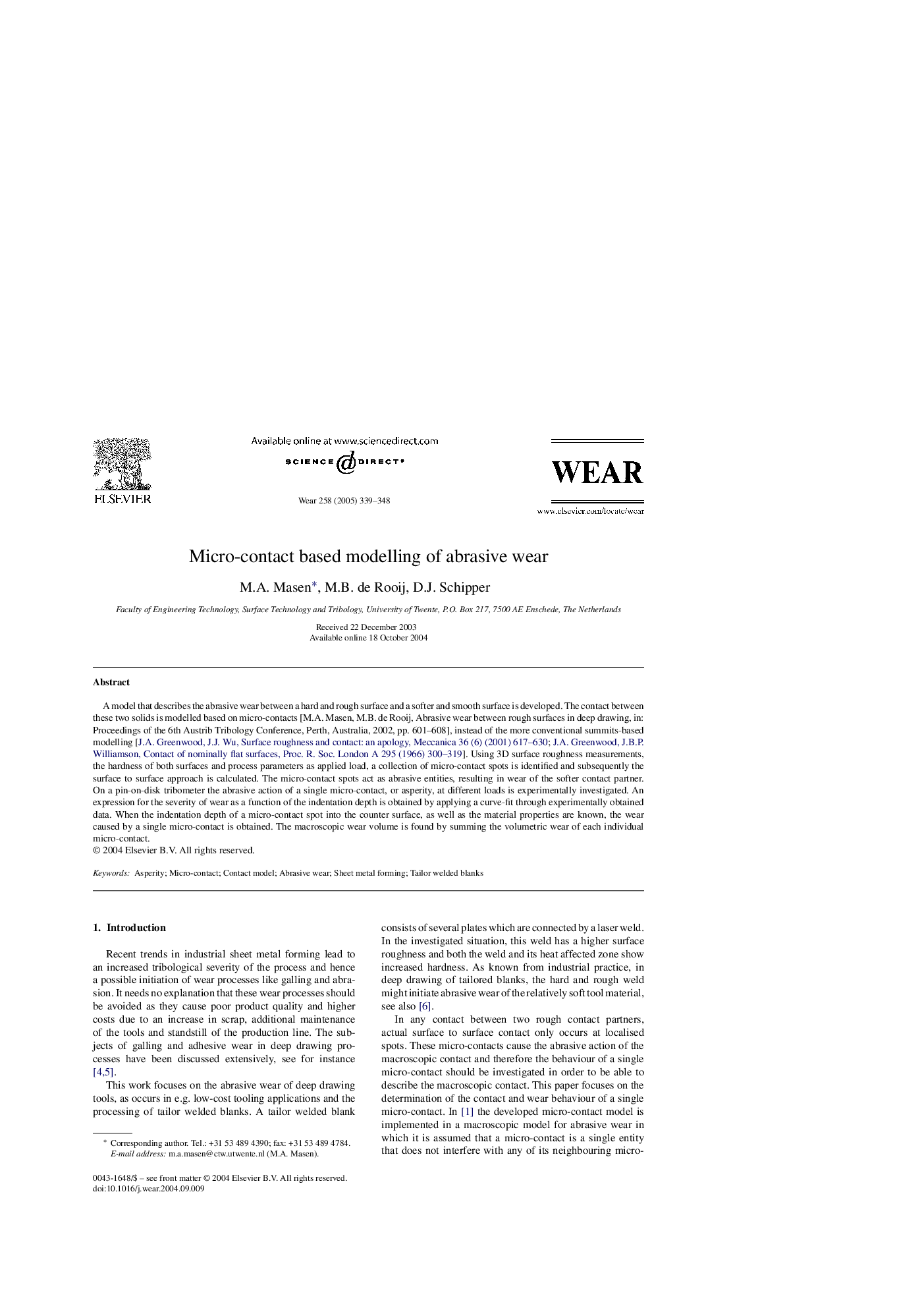| Article ID | Journal | Published Year | Pages | File Type |
|---|---|---|---|---|
| 9679629 | Wear | 2005 | 10 Pages |
Abstract
A model that describes the abrasive wear between a hard and rough surface and a softer and smooth surface is developed. The contact between these two solids is modelled based on micro-contacts [M.A. Masen, M.B. de Rooij, Abrasive wear between rough surfaces in deep drawing, in: Proceedings of the 6th Austrib Tribology Conference, Perth, Australia, 2002, pp. 601-608], instead of the more conventional summits-based modelling [J.A. Greenwood, J.J. Wu, Surface roughness and contact: an apology, Meccanica 36 (6) (2001) 617-630; J.A. Greenwood, J.B.P. Williamson, Contact of nominally flat surfaces, Proc. R. Soc. London A 295 (1966) 300-319]. Using 3D surface roughness measurements, the hardness of both surfaces and process parameters as applied load, a collection of micro-contact spots is identified and subsequently the surface to surface approach is calculated. The micro-contact spots act as abrasive entities, resulting in wear of the softer contact partner. On a pin-on-disk tribometer the abrasive action of a single micro-contact, or asperity, at different loads is experimentally investigated. An expression for the severity of wear as a function of the indentation depth is obtained by applying a curve-fit through experimentally obtained data. When the indentation depth of a micro-contact spot into the counter surface, as well as the material properties are known, the wear caused by a single micro-contact is obtained. The macroscopic wear volume is found by summing the volumetric wear of each individual micro-contact.
Related Topics
Physical Sciences and Engineering
Chemical Engineering
Colloid and Surface Chemistry
Authors
M.A. Masen, M.B. de Rooij, D.J. Schipper,
